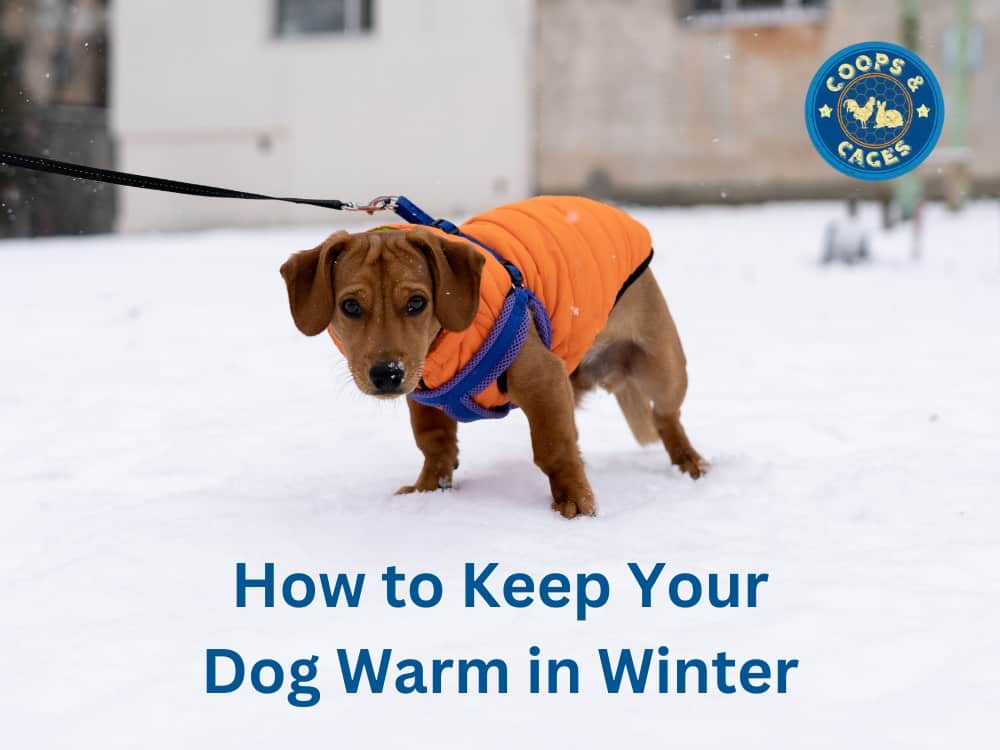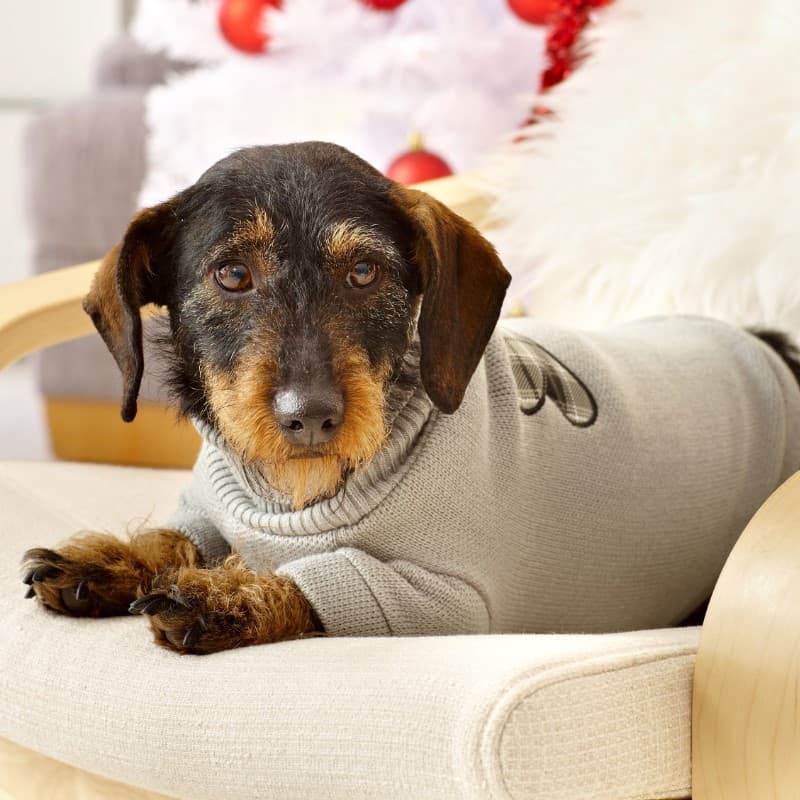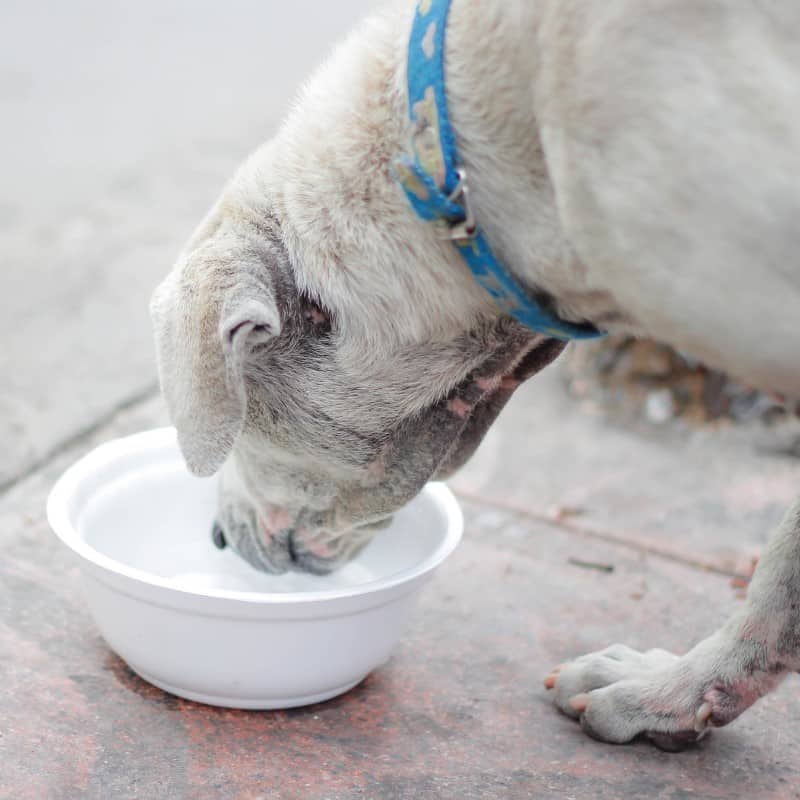As winter approaches, many pet owners find themselves searching for effective methods on how to keep their dog warm in winter.
Making sure our furry pals remain safe and comfy during the cold winter months is essential for their general health. In this comprehensive guide, we will explore various aspects of keeping your dog cosy and secure throughout the harsh winter season.
We will discuss the importance of providing adequate shelter for outdoor dogs in winter, highlighting health risks associated with inadequate protection from cold weather conditions.
Additionally, we’ll delve into recommended types of shelters suitable for outdoor kennels and proper positioning and maintenance techniques that can help retain warmth.
Focusing on indoor dogs as well, you’ll learn about creating a comfortable environment within your home and essential cold-weather gear options.
Lastly, we will address the significance of ensuring an adequate food and water supply during these chilly months so that you’re fully equipped with knowledge on how to keep your dog warm in winter.
How to Keep Your Dog Warm in Winter
As the colder months approach, it’s important to ensure that your furry friend stays warm and comfortable. Here are some tips to help keep your dog warm during winter weather:
The Importance of Adequate Shelter for Outdoor Dogs in Winter
Providing proper shelter from wind and cold temperatures is crucial for your outdoor dog’s well-being during winter weather. Inadequate protection can lead to health issues such as hypothermia, frostbite, and weakened immune systems. By ensuring a comfortable environment, you are safeguarding your pet’s overall health.
Health Risks Associated with Inadequate Shelter
- Hypothermia: Prolonged exposure to cold temperatures can cause a dog’s body temperature to drop dangerously low, leading to hypothermia. Signs of hypothermia can be shivering, tiredness, and respiration difficulties.
- Frostbite: Frostbite occurs when the skin freezes due to extreme cold. It typically affects extremities like ears, paws, and tails that have less blood flow.
- Weakened Immune System: Cold stress weakens a dog’s immune system making them more susceptible to infections and illnesses.
Factors Affecting Dogs’ Tolerance to Cold Weather
Different dogs have varying tolerance levels towards colder climates depending on factors such as breed type (some breeds are better suited for cold weather than others), age (older or younger dogs may be more sensitive), coat thickness (thicker coats provide better insulation), size (smaller dogs lose heat faster), and overall health condition.
At Coops and Cages, we understand the importance of providing your furry friend with a warm, secure outdoor living space during winter. Our range of high-quality dog kennels is designed to keep your pet safe and comfortable in colder temperatures.
Tips for Keeping Your Dog Warm in Winter
- Provide Adequate Shelter: Make sure your dog has a warm and dry place to rest, such as a dog kennel. The shelter should be elevated off the ground and have a door flap to keep out drafts.
- Use a Warm Blanket: Provide your dog with a thick blanket or bed to sleep on for cold days.
- Consider Dog Coats: For dogs that are sensitive to the cold, consider purchasing a dog coat or sweater to provide extra insulation.
- Keep Your Dog Dry: Wet fur can make your dog feel colder, so make sure to dry them off after being outside in the rain or snow.
- Protect Your Dog’s Feet: Use booties or paw wax to protect your dog’s feet from the cold ground.
- Provide Additional Warmth: Consider using a heated dog bed or adding a heat lamp to your dog’s shelter for extra warmth.
- Use Your Dog’s Body Heat: If you have multiple dogs, encourage them to snuggle together to share body heat.
By following these tips, you can help ensure that your furry friend stays warm and healthy during the cold winter months.
Providing adequate shelter for outdoor dogs in winter is essential to ensure their health and safety. To ensure their health and safety, the right type of kennel can provide outdoor dogs with a warm and comfortable environment in winter. Next, we’ll look at recommended types of shelters for outdoor dog kennels.
Recommended Outdoor Dog Kennels
Choosing the right type of kennel plays a significant role in keeping your dog warm during winter.
Wooden kennels designed specifically against drafts while allowing ventilation through small gaps near rooflines are ideal options. These structures provide insulation without compromising air circulation.
Wooden Kennels
A wooden kennel is an excellent choice for providing warmth and protection to your outdoor dog during colder months. The natural insulating properties of wood help retain heat inside the shelter, while timber slats ensure proper airflow, preventing condensation buildup that could lead to mold or mildew growth.
Look for features such as raised floors and sloped roofs to keep water from pooling around the structure and causing damage over time.
Plastic or Metal Kennels
While kennels made from plastic or metal can be very long lasting, they are not recommended. Metal kennels are not well insulated – they will be very cold in winter and extremely hot in summer. Plastic kennels do not provide adequate ventilation, leading to mold growing.
Kennel Features
When choosing a high-quality kennel for your pup, consider the following features:
- Durable Materials: Opt for a well-constructed shelter using sturdy materials to ensure longevity and resistance against extreme weather elements.
- Elevated Floors: Raised flooring keeps dogs off cold ground surfaces while promoting better drainage underneath shelters, preventing dampness issues commonly associated with flat-based designs on wet terrains.
- Weatherproofing: Look for a kennel with a waterproof asphalt roof. Water-based stain applied to kennel timber sections helps protect against rotting and other potential structural issues caused by prolonged exposure to harsh climates.
In addition to selecting the appropriate shelter type for your outdoor dog, it’s essential to regularly inspect and maintain their living space. This includes checking for any signs of wear or damage that could compromise insulation effectiveness over time.
Securing a robust, insulated dog house is essential for maintaining warmth in colder months. To ensure optimal performance, proper positioning and maintenance of the enclosure are key components to consider.
Proper Positioning and Maintenance of Your Dog’s Enclosure
Ensuring that the shelter is correctly positioned within your backyard can greatly impact their comfort during colder months.
By placing it away from direct wind exposure and maximising sunlight access, you are helping to create a warmer environment for your pet.
Strategic Placement to Minimise Wind Exposure
To minimise wind exposure, position the dog kennel in an area protected by natural barriers such as trees or fences. In Australia, orienting the entrance towards the north will allow maximum sunlight access while keeping cold southern winds at bay. This strategic placement helps maintain warmth inside the kennel throughout winter periods.
Sealing Gaps or Cracks Using Weather-Resistant Materials
Maintaining your dog’s enclosure involves regularly checking for any gaps or cracks where cold air could seep through. If you find any openings, seal them using weather-resistant materials like caulk or foam insulation strips.
These simple maintenance tasks help ensure a comfortable living space for your furry friend even during chilly conditions.
In addition to proper positioning and maintenance of the enclosure itself, consider adding extra features that can further enhance warmth retention within your dog’s outdoor living space:
- Raised Flooring: Elevating the floor of the kennel off the ground can help insulate against cold surfaces and prevent moisture from seeping in.
- Windbreaks: Installing windbreaks around the enclosure, such as tall shrubs or fencing, can further shield your dog’s kennel from chilly gusts of air.
To ensure your pup’s comfort and health during winter, it is important to properly position and maintain their outdoor enclosure. Remember that a cosy outdoor living space is essential for maintaining their overall health and well-being.
Proper positioning and maintenance of your dog’s enclosure is essential for keeping them warm in the winter months. To further keep indoor dogs comfortable throughout winter, it is essential to create a suitable environment for their needs.
Keeping Indoor Dogs Warm in Winter
As the temperature drops, it’s essential to ensure that your indoor dogs stay warm and comfortable during the colder months. By providing a cosy space with soft bedding covered by blankets, you can help maintain their body warmth efficiently.
Creating a Comfortable Indoor Environment for Your Pet
To create an inviting environment for your dog indoors, start by placing their bed or crate in a draft-free area of the house.
If possible, close off unused rooms to trap heat within smaller spaces. You can also add extra layers of insulation like soft pet beds, fleece blankets, or even heated pads designed specifically for pets.
- Draft-free location: Choose an area away from windows and doors where cold drafts are less likely to reach your pet.
- Closing off unused rooms: This helps conserve energy while maintaining warmth within occupied areas of the home.
- Pet-specific bedding options: Invest in high-quality pet beds or heating pads that provide additional warmth during the colder months.
Cold Weather Gear Essentials
In addition to creating a warm indoor environment, consider investing in cold-weather gear such as booties and winter coats for outdoor potty breaks or walks. These items will help protect against chilly temperatures and wind.
By adhering to these easy steps, you can make sure your house-bound pup stays cosy and contented during the colder months.
With proper nutrition and hydration also being important factors in keeping your pet healthy throughout the season, it is essential to adjust their food intake according to their activity level while providing them with a sufficient water supply.
Ensuring Adequate Food and Water Supply During Winter Months
Dehydration becomes an even greater risk when temperatures plummet rapidly overnight, especially considering how many more calories dogs burn simply trying to stay alive amidst frigid conditions outside. Make sure they have plenty of fresh water available at all times and adjust their food intake accordingly based on activity levels.
Importance of Hydration in Colder Months
Maintaining proper hydration is crucial for your dog’s overall health during winter months. Cold weather can cause a decrease in thirst sensation, leading to inadequate water consumption.
Additionally, the arid atmosphere can heighten the rate of fluid loss from your pet’s body. To ensure that your dog stays well-hydrated throughout the season, provide clean and unfrozen water daily by using heated water bowls or thermal containers.
Adjusting Food Intake According to Activity Level
In colder weather, dogs tend to expend more energy trying to keep warm; hence they require additional calories in their diet. Be mindful of overfeeding, as this could lead to weight-related issues in the future.
Instead, monitor their activity level closely and make necessary adjustments:
- Increase calorie intake: If you notice that your dog spends a significant amount of time outdoors playing or exercising during winter months, consider increasing their daily caloric intake slightly.
- Maintain regular feeding schedule: Dogs thrive best with consistency; therefore stick with a routine feeding schedule even if there are changes in daylight hours due to seasonal shifts.
- Select appropriate food type: Opt for high-quality pet foods formulated specifically for cold weather conditions, such as those containing higher fat content to provide additional energy.
Ensuring your pup has sufficient sustenance and hydration during the chillier season is key to keeping them in top form. For more information on pet care essentials, visit Coops and Cages.
FAQs in Relation to How to Keep Dog Warm in Winter
What’s the Best Way to Keep a Dog Warm in Winter?
Look for a high quality timber dog kennel. Place the shelter in a strategic location to minimise wind exposure and use weather-resistant materials to seal any gaps.
Additionally, provide cosy bedding options like blankets and ensure an adequate supply of food and water. Also consider a winter coat or booties.
What Temperature is Too Cold for Dogs?
The threshold temperature for dogs varies depending on factors such as breed, size, age, coat type, and overall health.
Generally speaking, temperatures below 15°C can be uncomfortable for most dogs, while temperatures under 10°C can become potentially dangerous. Always monitor your pet closely during colder months.
How Do I Keep My Dog Warm at Night in the Winter?
Keep your dog warm at night by providing a high quality timber dog shelter. Offer cosy bedding options like blankets or heated pet beds designed specifically for pets’ safety. If possible, allow your dog to sleep in your house during very cold nights.
What is the Best Material to Keep Dogs Warm?
Wooden kennels are great shelters that help retain heat effectively during winters. For bedding purposes inside these shelters or indoor areas where they sleep, thick fleece blankets or woolen mats work well as they trap body warmth efficiently, keeping them snug throughout chilly nights.
Conclusion
As pet owners, we must take necessary steps to ensure our pets‘ safety and comfort in winter. By providing adequate shelter, proper insulation techniques, and adjusting their food and water supply accordingly, we can help keep our dogs warm in winter.
No matter if you have a pup that stays inside or outside, there are numerous strategies to guarantee they remain content during the chillier months.
From insulated wooden kennels to cosy bedding options and cold weather gear essentials for indoor dogs – we’ve got you covered!
If you’re looking for high-quality pet enclosures that provide a safe and comfortable living space for your pets year-round, check out Coops And Cages!
At Coops And Cages, we ensure that your furry friends are always taken care of and remain snug and contented no matter the season.








